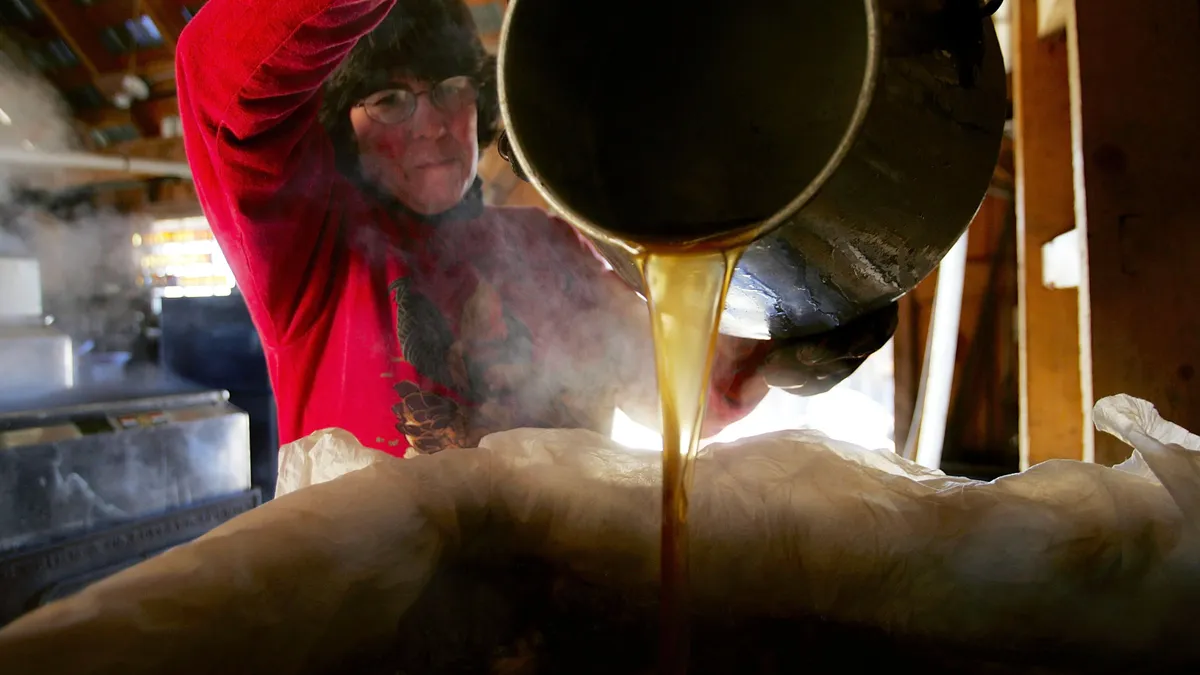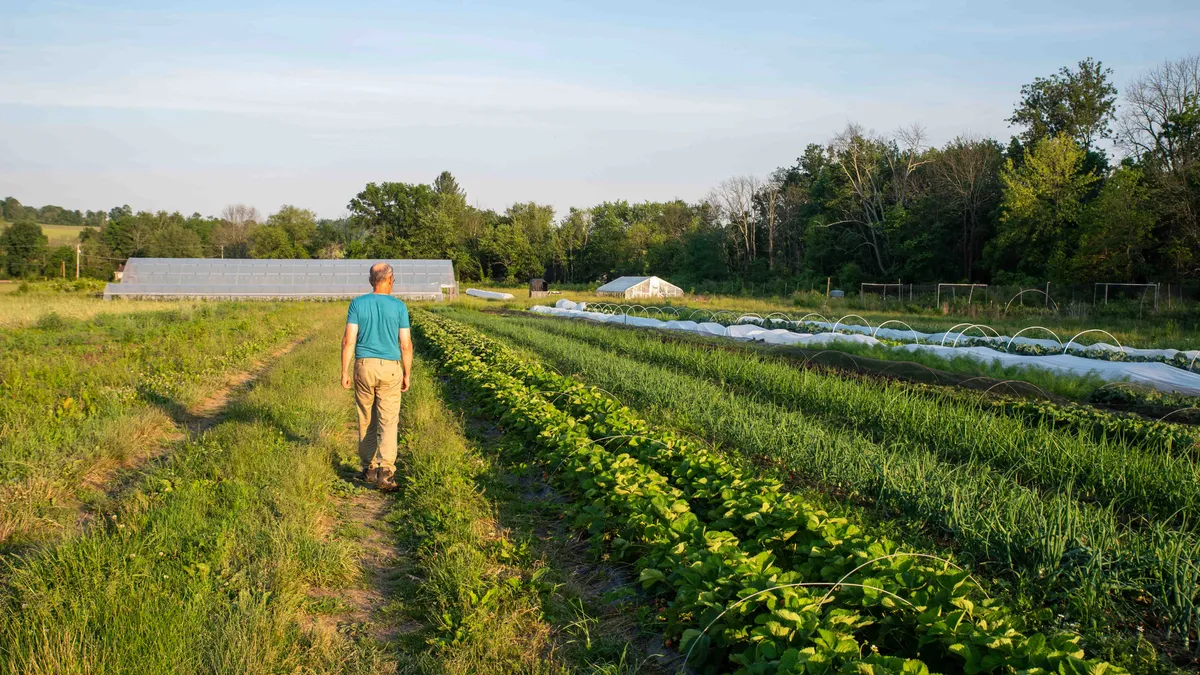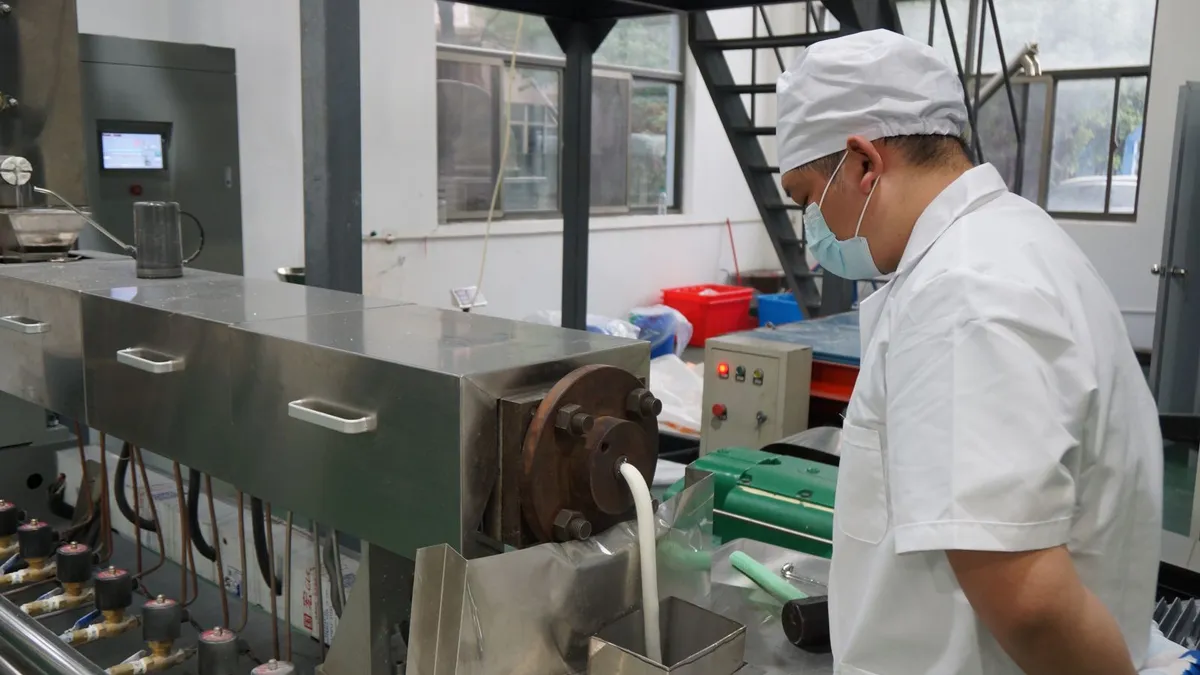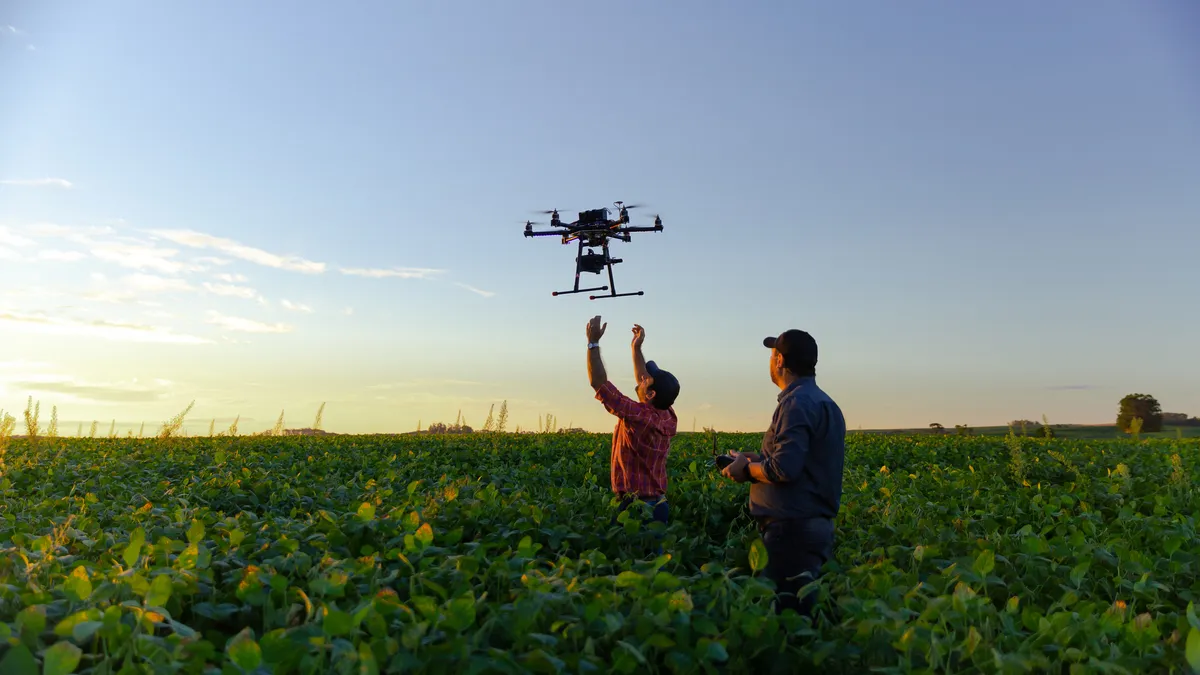A shortage of maple syrup last year was another casualty of recently unpredictable winters but, so far, 2024 is shaping up to be a sweet year for the industry, experts say.
Quebec's maple production in 2024 reached a record as of this summer, Joël Vaudeville, director of communications for Quebec Maple Syrup Producers, told Agriculture Dive. Approximately 239 million pounds of maple syrup were produced as of spring 2024, compared to 124 million pounds in all of last year.
This year, favorable weather and producer’s adaptations to changes in the growing cycle have helped boost production numbers for producers even higher than expected.
“Maple syrup production is highly dependent on the weather,” Vaudeville said. “In years when Mother Nature is generous, it can result in production surpassing demand, and the industry struggles to deal with a surplus.”
Canada's billion dollar maple syrup industry accounts for 75% of the world's production. Around 90% is produced in the province of Quebec, where the world's sole strategic reserve of maple syrup was set up nearly 25 years ago.
However, after a few warm winters and a pandemic spike in demand, Quebec’s reserve, which exists in part to stabilize global supply and prices, dropped lower in 2023 than it has been in over sixteen years. Built to hold 133 million pounds of syrup, the reserve last year suddenly dwindled to just 6.9 million.
Warmer temperatures can disrupt the freeze-thaw cycles of spring that cause maple sap to flow. While the sugaring season typically lasts around 4 to 6 weeks from mid-March to the end of April, it now starts earlier and finishes sooner, giving farmers less time to collect maple sap, leading to lower yields. A study also found that warmer temperatures reduce the sugar content of maple sap, meaning it takes more sap to produce pure maple syrup.
The maple tap stopped flowing outside of Canada, too. Pure maple production in the United States dropped by 15% in the 2023 season with some experts attributing the decline to fluctuating climate conditions, including unseasonable warmth and extreme floods.
Allison Hope, executive director of Vermont Maple Sugar Makers Association, said that while it certainly seems the Quebec reserve has had a “bounce back year,” U.S. producers weren't as lucky. Devastating floods over the summer in Vermont, the country’s top maple producing state, is likely to create difficult conditions for growers.
“We had warmer weather this season than we would have liked, followed up by a pretty harsh snowstorm in March,” Hope said. "[Trees] don't love to have super wet roots, and so flooding may have impacted certain areas."
Bumpy road to recovery
While 2024 has provided an opportunity to rebound, the significant expansion in production is expected to bring its own set of challenges.
In order to account for increasing climate variations in the future, Quebec's maple syrup producers issued 7 million new taps in 2024, which will hopefully represent a 21 million pound annual increase in maple syrup production. These 7 million taps are in addition to another 7 million announced back in 2021. Vaudeville said the QMSP anticipates a significant increase in maple syrup production in Quebec by 2026.
Unlike other crops like cherries where time is of the essence to sell, producers can preserve maple syrup for extended periods of time, allowing the industry to keep the market stocked even in difficult years. But bolstering maple syrup reserves doesn't do much to help producers' bottom line.
“The issue for producers is that they are not paid for the maple syrup placed into inventory until it’s sold, resulting in additional financial pressure. Add to this climate change, which is causing even greater production variations,” QMSP President Luc Goulet said in a press release.
As unpredictable weather events are expected to sap the strength of maple production, producers have had to adjust. And while some have predicted a “Maple-pocalypse,” Hope of the Vermont Maple Sugar Association said the industry remains resilient.
Growers are implementing new technologies and innovations to keep maple syrup a mainstay on the breakfast table. Many of those reformed practices are around agroforestry and protecting biodiversity. In Vermont, for example, the Bird-Friendly Maple Project certifies qualifying maple farms if they can demonstrate the forests where they tap sugar maple trees contain a diversity of tree species, which improves the forest structure and foraging and nesting for birds. The program is also making its way to New York, Massachusetts and Maine.
“Without forest health, there's no biodiversity. Without biodiversity and forest health, there's no long-term industry. All of these things work in concert, and technology is certainly a piece of that puzzle,” Hope said.


















